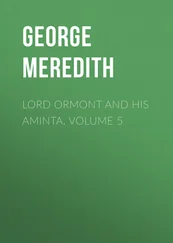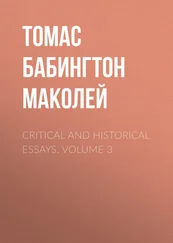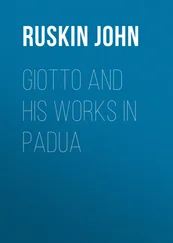John Audubon - Audubon and his Journals, Volume 2 (of 2)
Здесь есть возможность читать онлайн «John Audubon - Audubon and his Journals, Volume 2 (of 2)» — ознакомительный отрывок электронной книги совершенно бесплатно, а после прочтения отрывка купить полную версию. В некоторых случаях можно слушать аудио, скачать через торрент в формате fb2 и присутствует краткое содержание. Жанр: foreign_antique, foreign_prose, на английском языке. Описание произведения, (предисловие) а так же отзывы посетителей доступны на портале библиотеки ЛибКат.
- Название:Audubon and his Journals, Volume 2 (of 2)
- Автор:
- Жанр:
- Год:неизвестен
- ISBN:нет данных
- Рейтинг книги:5 / 5. Голосов: 1
-
Избранное:Добавить в избранное
- Отзывы:
-
Ваша оценка:
- 100
- 1
- 2
- 3
- 4
- 5
Audubon and his Journals, Volume 2 (of 2): краткое содержание, описание и аннотация
Предлагаем к чтению аннотацию, описание, краткое содержание или предисловие (зависит от того, что написал сам автор книги «Audubon and his Journals, Volume 2 (of 2)»). Если вы не нашли необходимую информацию о книге — напишите в комментариях, мы постараемся отыскать её.
Audubon and his Journals, Volume 2 (of 2) — читать онлайн ознакомительный отрывок
Ниже представлен текст книги, разбитый по страницам. Система сохранения места последней прочитанной страницы, позволяет с удобством читать онлайн бесплатно книгу «Audubon and his Journals, Volume 2 (of 2)», без необходимости каждый раз заново искать на чём Вы остановились. Поставьте закладку, и сможете в любой момент перейти на страницу, на которой закончили чтение.
Интервал:
Закладка:
6 6 The "Assiniboin" was the steamer on which Maximilian, Prince of Wied, travelled down the Missouri in 1833.steamer was burnt with all her cargo uninsured, in the year 1835. I heard that after she had run ashore, the men started to build a scow to unload the cargo; but that through some accident the vessel was set on fire, and that a man and a woman who alone had been left on board, walked off to the island, where they remained some days unable to reach shore.
June 6, Tuesday. This morning was quite cold, and we had a thick white frost on our upper deck. It was also extremely cloudy, the wind from the east, and all about us looked dismal enough. The hands on board seemed to have been busy the whole of the night, for I scarcely slept for the noise they made. We soon came to a very difficult part of the river, and had to stop full three hours. Meanwhile the yawl went off to seek and sound for a channel, whilst the wood-cutters and the carriers – who, by the way, are called "charrettes" 7 7 This is an interesting note of the early French name on the Missouri of the persons about a boat whom we should call "stevedores," or "roustabouts." The French word charette , or charrette , occurs also as a personal name, and it will be remembered that there was a town of La Charette on the Lower Missouri. – E. C.
– followed their work, and we gathered a good quantity of drift-wood, which burns like straw. Our hopes of reaching the Mandan Village were abandoned, but we at last proceeded on our way and passed the bar; it was nearly dinner-time. Harris and Bell had their guns, and brought two Arctic Towhee Buntings and a Black-billed Cuckoo. They saw two large flocks of Geese making their way westward. The place where we landed showed many signs of Deer, Elk, and Buffaloes. I saw trees where the latter had rubbed their heavy bodies against the bark, till they had completely robbed the tree of its garment. We saw several Red-shafted Woodpeckers, and other birds named before. The Buffalo, when hunted on horseback, does not carry its tail erect, as has been represented in books, but close between the legs; but when you see a Buffalo bull work its tail sideways in a twisted rolling fashion, then take care of him, as it is a sure sign of his intention to rush against his pursuer's horse, which is very dangerous, both to hunter and steed. As we proceeded I saw two fine White-headed Eagles alighting on their nest, where perhaps they had young – and how remarkably late in the season this species does breed here! We also saw a young Sandhill Crane, and on an open prairie four Antelopes a few hundred yards off. Alexis tells me that at this season this is a rare occurrence, as the females are generally in the brushwood now; but in this instance the male and three females were on open prairie. We have passed what is called the Heart 8 8 Heart River, the stream which falls into the Missouri near the town of Mandan, about opposite Bismarck, N. Dak. Here the river is now bridged by the Northern Pacific Railroad, which crosses the Missouri from Bismarck, and follows up Heart River for some distance. – E. C.
River, and the Square Hills, which, of course, are by no means square, but simply more level than the generality of those we have passed for upwards of three weeks. We now saw four barges belonging to our company, and came to, above them, as usual. A Mr. Kipp, one of the partners, came on board; and Harris, Squires, and myself had time to write each a short letter to our friends at home. Mr. Kipp had a peculiar looking crew who appeared not much better than a set of bandits among the Pyrenees or the Alps; yet they seem to be the very best sort of men for trappers and boatmen. We exchanged four of our men for four of his, as the latter are wanted at the Yellowstone. The country appears to Harris and to myself as if we had outrun the progress of vegetation, as from the boat we observed oaks scarcely in leaflets, whilst two hundred miles below, and indeed at a much less distance, we saw the same timber in nearly full leaf; flowers are also scarce. A single Wolf was seen by some one on deck. Nothing can be possibly keener than the senses of hearing and sight, as well as of smell, in the Antelope. Not one was ever known to jump up close to a hunter; and the very motion of the grasses, as these are wafted by the wind, will keep them awake and on the alert. Immediately upon the breaking up of the ice about the Mandan Village, three Buffaloes were seen floating down on a large cake; they were seen by Mr. Primeau from his post, and again from Fort Pierre. How much further the poor beasts travelled, no one can tell. It happens not infrequently, when the river is entirely closed in with ice, that some hundreds of Buffaloes attempt to cross; their aggregate enormous weight forces the ice to break, and the whole of the gang are drowned, as it is impossible for these animals to climb over the surrounding sharp edges of the ice. We have seen not less than three nests of White-headed Eagles this day. We are fast ashore about sixteen miles below the Mandan Villages, and will, in all probability, reach there to-morrow morning at an early hour. It is raining yet, and the day has been a most unpleasant one.
June 7, Wednesday. We had a vile night of rain, and wind from the northeast, which is still going on, and likely to continue the whole of this blessed day. Yesterday, when we had a white frost, ice was found in the kettles of Mr. Kipp's barges. We reached Fort Clark 9 9 "Fort Clark came in sight, with a background of the blue prairie hills, and with the gay American banner waving from the flag-staff… The fort is built on a smaller scale, on a plan similar to that of all the other trading posts or forts of the company. Immediately behind the fort there were, in the prairie, seventy leather tents of the Crows." (Prince of Wied, p. 171.) Fort Clark stood on the right bank of the Missouri, and thus across the river from the original Fort Mandan built by Lewis and Clark in the fall of 1804. Maximilian has much to say of it and of Mr. Kipp.
Интервал:
Закладка:
Похожие книги на «Audubon and his Journals, Volume 2 (of 2)»
Представляем Вашему вниманию похожие книги на «Audubon and his Journals, Volume 2 (of 2)» списком для выбора. Мы отобрали схожую по названию и смыслу литературу в надежде предоставить читателям больше вариантов отыскать новые, интересные, ещё непрочитанные произведения.
Обсуждение, отзывы о книге «Audubon and his Journals, Volume 2 (of 2)» и просто собственные мнения читателей. Оставьте ваши комментарии, напишите, что Вы думаете о произведении, его смысле или главных героях. Укажите что конкретно понравилось, а что нет, и почему Вы так считаете.












